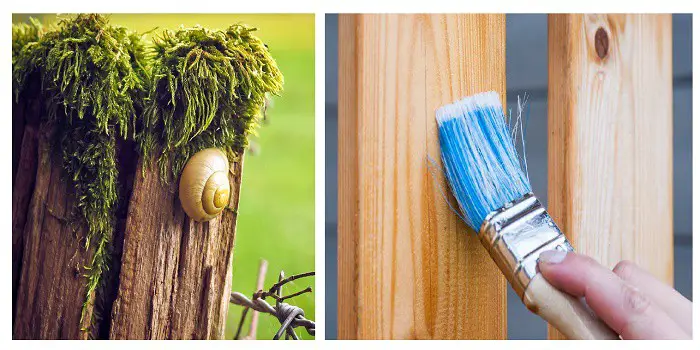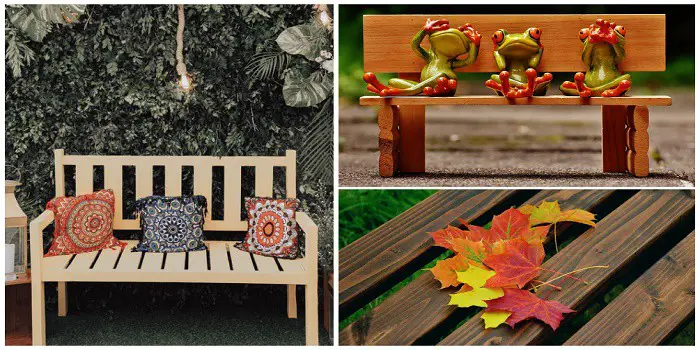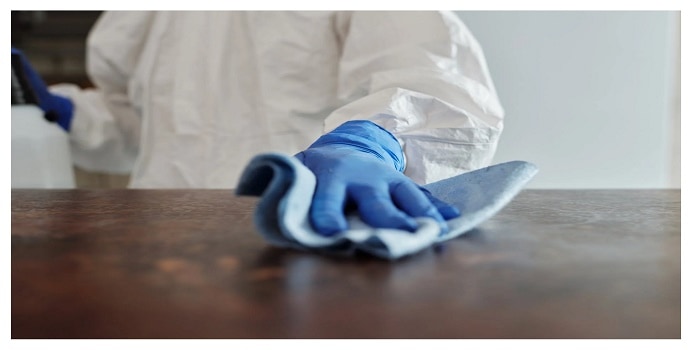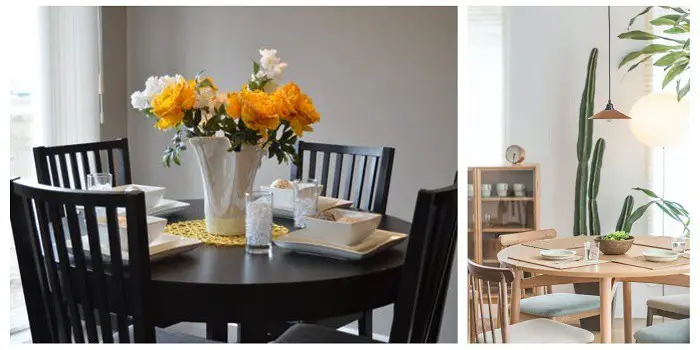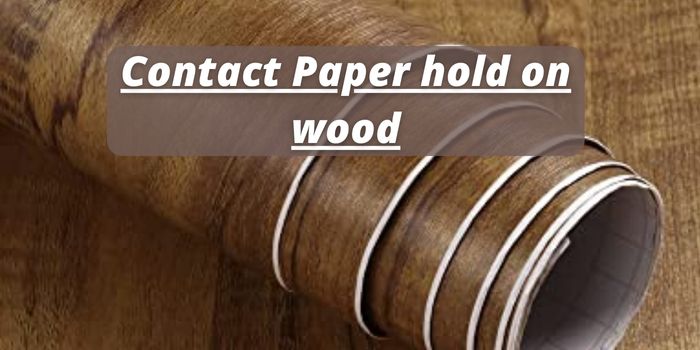
Contact paper is an excellent way to line surfaces like cabinets, drawers, countertops, and more. Though many of these surfaces are made out of wood or particle board, contact paper may not stick to them as well.
However, by applying extra adhesive, you can make contact paper stick to wood or particle board.
The downside is that it creates a permanent bond which could potentially damage the surface.
But that’s a short glimpse into how to make contact paper stick to unfinished wood or particle board. There’s definitely more to the whole story you need to understand when covering particle board with contact paper.
Here in this article, I will discuss what contact paper is in the first place, what it is made up of, how strongly it holds on wood, how you can remove it if required, and how it’s different from peel-and-stick wallpaper. So, let’s get started and dive into it.
What is Contact Paper?
Contact paper is a type of thin, self-adhesive vinyl-based film that’s used to line various surfaces like cabinets, countertops, walls, and more.
The paper is available in both adhesive and non-adhesive versions.
It’s also available in a wide range of colors, textures, and patterns, which makes it a popular choice for DIY home décor projects and crafts that involve the usage of cardboard, canvas, etc.
Contact paper is typically made of PVC (polyvinyl chloride), which is a type of plastic. It also contains a pressure-sensitive adhesive that allows it to stick to surfaces.
Uses and applications:
- Resurfacing countertops
- Decorating stair risers
- As a backsplash in a kitchen or bookshelf
- Covering patio doors to keep the hot sun rays
- Covering old kitchen appliances and even ceiling fans
- Covering bathroom windows and clear shower doors for extra privacy
How Strong Does Contact Paper hold on wood?
The pressure-sensitive adhesive on contact paper is strong enough to hold on most surfaces, including wood.
However, if the surface is very smooth or has a lot of oil on it, the adhesive may not stick as well. In these cases, you can use extra adhesive to make sure the contact paper sticks on the surface.
That said, if the wooden boards are unfinished, untreated, damaged, or rotted, it’s unlikely for contact paper to stick to them for a long time.
To create a longer-lasting bond, you will have to prepare the wood surface and use some extra adhesive.
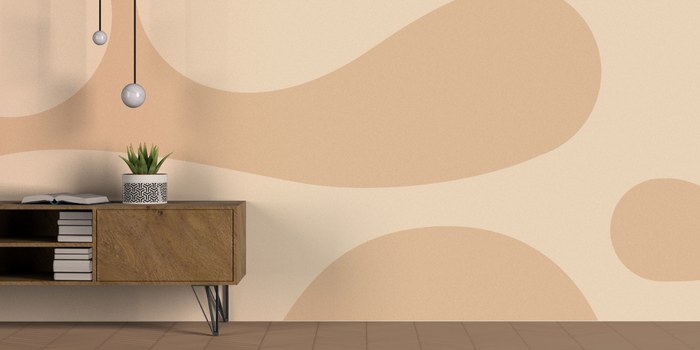
Applying Contact Paper on Unfinished Particle Board
Making contact paper stick to particle board is an easy process, but it only works well if you follow the instructions cautiously.
Here are a few steps on how you can do it.
Step 1- Start by cleaning and wiping down the unfinished wood surface with a damp cloth. It can be helpful to remove any dirt, dust, or grease that could potentially prevent the contact paper from sticking.
Step 2- Next, use sandpaper to lightly even up and smoothen the surface. This will create tiny pores on the wood that will allow the adhesive to grip better.
Step 3- Clean up the sanded dust nicely and apply a layer of extra adhesive all over the surface using a roller or brush. You can use contact cement, spray adhesive, or even hot glue for this purpose.
Step 4- Make sure to apply the adhesive evenly over the surface and wait for it to become tacky before proceeding.
Step 5- Now, slowly apply the contact paper to the surface, starting from one end and working your way to the other.
Step 6- Use a utility knife or scissors to trim off any excess contact paper around the edges.
Step 7- Finally, apply pressure all over the surface to ensure the contact paper is stuck on properly.
Do not forget to align the paper at the edge of the surface as well. And allow the adhesive to dry completely before using the surface.
TIP:
Sometimes getting the contact paper to stick to MDF and particle boards will not be easy. This can be due to low-quality contact paper or a bad batch of the board.
In such cases, you can use a heat gun to slightly heat up the contact paper before applying it. This will make the adhesive tackier and easier to work with.
It should not heat it too much, or else it can damage the contact paper.
Priming the surface with a wood primer can also help the contact paper stick better in such cases. So, you can try that if you have some old primer can lying idle in your storage.
How Can You Remove Contact Paper From Wood – Will It Be Easy?
In most cases, you can easily remove contact paper by peeling it off the surface.
However, if it’s been on the surface for a long time and there is an extra gum or adhesive you have used, getting the paper off would be challenging.
Since wood is a porous surface, there will be some stubborn residue left behind that you will need to deal with.
If you ever need to remove contact paper from a surface without ruining the wood fibers, you can do so by peeling it off slowly.
If that doesn’t work, use a hair dryer or a heat gun to soften the adhesive first. Then peel it off.
If any sticky residue is left behind on your kitchen cabinet shelf or drawer liner boards, remove it with a damp cloth and some vinegar.
Rubbing vegetable oil, rubbing alcohol, or nail polish remover (with a rag) might also work, so you can try that as an alternative to vinegar.
Use a putty knife to scrap off any residue if needed. Be sure not to damage the surface in the process.
Is Peel and Stick Wallpaper the Same as Contact Paper – Or is it Different?
The main difference between contact paper and peel-and-stick wallpaper is in their thickness and durability.
Contact paper is thin and not as durable as wallpaper. It’s also not very easy to remove once applied to a surface.
On the other hand, peel-and-stick wallpaper is thicker and more durable. It can also be easily removed without damaging the surface underneath.
So, if you’re looking for a temporary fix or something that’s not too difficult to remove, contact paper is the way to go.
The difference between the two products also lies in the installation method.
While contact paper is mostly used as a decorative material for horizontal surfaces such as kitchen and bathroom countertops, shelves, and drawers, peel-and-stick wallpaper is generally for vertical surfaces like walls, backsplashes, and stair risers.
Also, remember that there is also a difference between contact paper and peel-and-stick wallpaper in terms of waterproofing.
Contact paper is made of vinyl and is waterproof, but wallpapers are generally not.
Do keep this in mind before using either of the two products in areas where they might be exposed to water.
FAQs
Will contact paper stick well to laminate?
The contact paper will stick well to the laminate, veneer, and even plastic as long as the surface is clean and dry.
If the surface is very smooth, it’s a good idea to lightly sand it before applying the contact paper.
Also, if you plan to remove it from the surface any time soon, it’s good to use non-adhesive, rubber-backed, or even clear vinyl contact paper.
Contact paper with strong adhesives, when applied, creates a nearly permanent bond.
This means if you try to remove them, they can either damage the surface underneath or will leave a sticky residue, which is hard to remove.
If you use a weaker adhesive contact paper, it will not hold up as well over time and may eventually need to be replaced.
Can you use contact paper to cover cardboard boxes?
You can cover cardboard boxes with contact paper, but I would only recommend it for decorative purposes.
Since most cardboard sheets come with a natural wave, you might not get the smoothest results.
In addition, if the cardboard is bent, dented, or damaged in any way, I would avoid using it.
These imperfections might show up under the contact paper, and even worse, the paper is not going to hold up well to wear and tear.
If you need a more durable option, I would recommend using something like duct tape or wrapping paper.
What is the best contact paper for furniture and cabinets?
Top-quality papers are manufactured by brands such as Duck, Con-Tact, and a few others.
If you want something a bit more affordable, there are also many good generic brands that can be found at stores like Walmart or Target.
I would recommend avoiding the very cheap contact paper as it is usually thin and of poor quality.
In terms of design, there are many different options to choose from, including solid colors, wood grain, marble, and even patterned papers.
It really depends on your personal preference and the look you’re going for.
When shopping for contact paper, make sure to pay attention to the thickness (measured in mil), durability, and adhesive strength.
The thicker the paper, the more durable it will be. However, it will also be more difficult to work with.
As for the adhesive, I would recommend getting repositionable paper if you’re not sure how you want to place it on the surface.
This will allow you to move it around until you get the perfect placement. If you’re confident in your ability to apply it correctly the first time, then a permanent adhesive will work just fine.
Final Thoughts
Contact paper is an easy and inexpensive way to change the look of your furniture and cabinets.
While it’s a great way to protect wood surfaces from wear and tear, it poses certain challenges when pasting them to bare walls, unfinished wood, and particle boards.
Make sure to take the time to clean and dry the surface before applying the paper and be patient when working with it to avoid any wrinkles or bubbles. With a little bit of practice, you’ll be able to achieve professional-looking results in no time.
Share the post "Can Contact Paper be Used on Unfinished Wood or Particle Board?"

Hi, I am Mark Garner a professional carpenter, woodworker, and DIY painter. I live in the small city of Peoria, Arizona as a semi-retired woodworker. I have started this blog with a simple motive to help you with my wood experience in this sector. If you like to know more about what I love doing and how it all got started, you can check more about me here.

